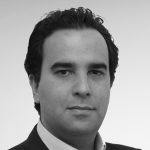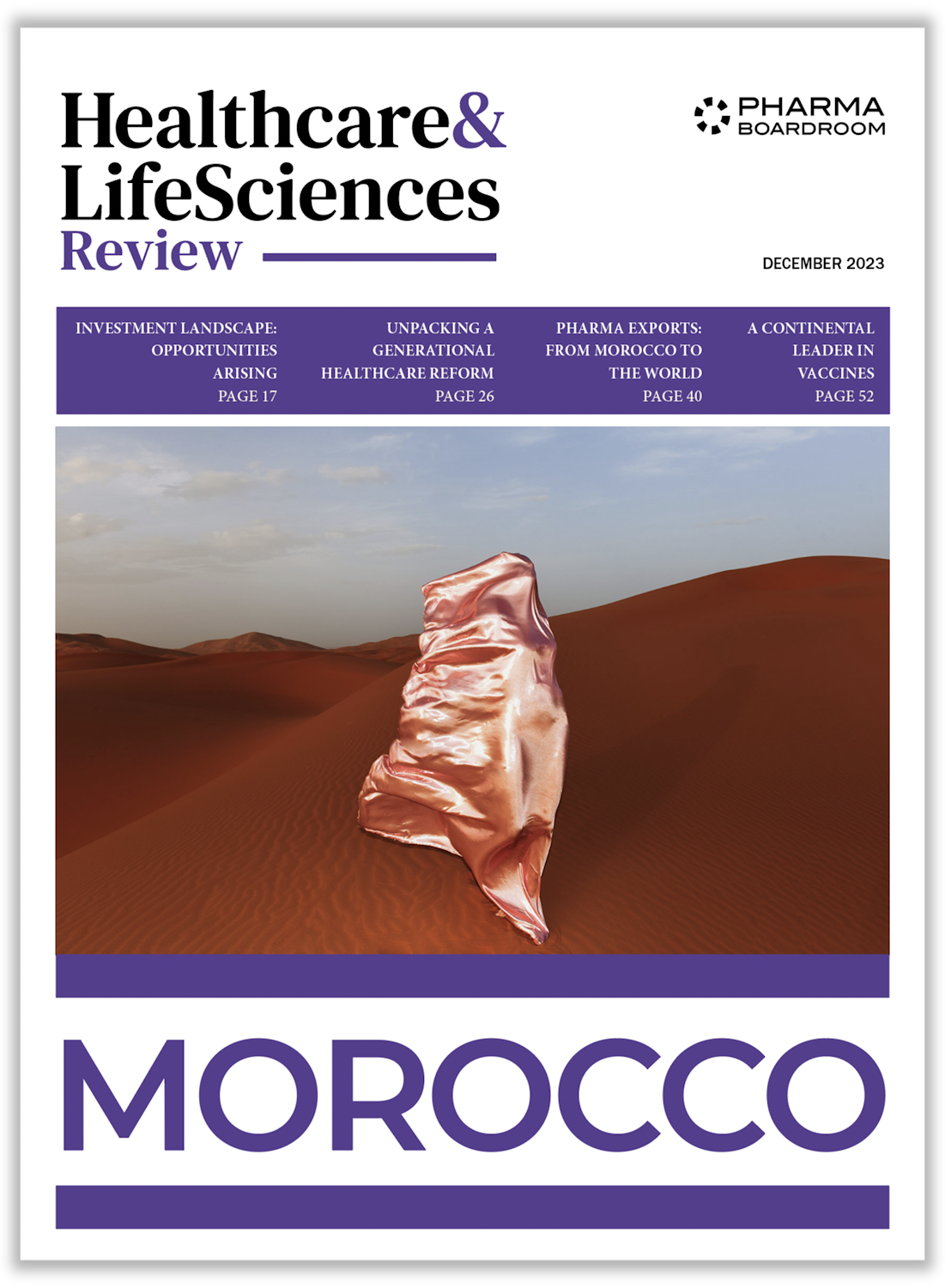Hernán Fernández, Managing Partner at Angel Ventures, showcases the crucial role of private investments to enhance the national healthcare system as well as explains his action plan to raise the funds for the first regional venture capital fund in Latin America.
Mr. Fernández, what are the points that triggered you to found Angel Ventures Mexico (AVM) in 2008?
By that time, there was a lack of private equity investments in Mexico for early stage entrepreneurial projects. Thus, we spotted such market opportunity and decided to found Angel Ventures Mexico, taking advantage of the investors that were looking for opportunities to invest and the high value entrepreneurial projects that were looking for those funds to support their operations. In addition, in 2008, Mexico was starting to become a hub within Latin America for such types of operations. Furthermore, from a personal standpoint, founding a venture capital (VC) as AVM was one of my lifetime goals and I was glad the opportunity came up.
Could you expand on the current operations of AVM?
The services and operations of AVM have been evolving since its foundation back in 2008. Indeed, we started acting as a business angels network looking for co-investment early stage projects, and such approach is still within our DNA.
At a certain point, we started to have a solid mass of investors within our network that trusted and supported us to raise our first fund (AVM-I) of USD 20 million. I would like to mention that such fund was supported by leading stakeholders such as Inter-American Development Bank, National Development Bank of Mexico (Nafin), Mexico Ventures, and 50 family offices. Therefore, AVM certainly became a great source of entrepreneurial projects for investors and capital source for entrepreneurial projects.
We have already invested around 80 percent of this first fund and, thus, we are already in the process of raising our second fund (AVM-II). Within such a frame, we are expecting to raise approximately USD 120 million to invest in multisectorial entrepreneurial projects in Mexico, Colombia, Chile and Peru; indeed, we have already collected 40 percent of such capital.
Angel Ventures Mexico currently has USD 20 million of funds and, as you mentioned, it is looking to grow the pot to USD 120 million. What is your action plan to overcome such goal?
As aforementioned, AVM II will have a more regional investment approach and will target early stage projects in countries that are within the Pacific Alliance.
[Featured_in]
Even though Brazil is currently the first country that any international investor is targeting when looking at opportunities within Latin America, Pacific alliance countries can certainly offer highly attractive opportunities for investors. Indeed, within the Pacific Alliance integration frame, the combined two trillion dollars of GDP and 250 million population of the Pacific alliance countries such as Mexico, Colombia, Peru and Chile pose an attractive investment opportunity that is larger than Brazil; such regional approach is certainly positive for the Latin American VC landscape.
In addition, Mexico is the country with the second most free trade agreements in the world and it positions the country as a great gateway to the rest of the region in comparison to the situation of Brazil. In my opinion, Mexico will play a crucial role within such Pacific Alliance and AVM is taking advantage of such fact to attract the capital needed to raise AVM-II.
In this sense, we have offices in Mexico, Peru, Colombia and, in the near future, Chile to successfully build up such VC investment opportunities and take advantage of the Pacific Alliance integration investing in companies that have presence in those countries.
Angel Ventures Mexico has two funds (AVM Co investment fund AVM–I and Pacific Alliance Fund AV–II – recently created) but also an investors network (AV Network), and an incubator (Archetype incubator). Could you expand on how you are adding value to your investors and entrepreneurs through such incubator and angel investors network?
We rapidly identified that, even though we were receiving high value entrepreneurial projects, entrepreneurs are not usually properly evaluating their business. Archetype incubator is the first stage in which we start working hand in hand with those projects that we foresee potential ahead. Thus, the incubator is a formal process in which we help entrepreneurs to design a business and financial plan before entering to roadshows with our own fund or our business angels network. I am personally proud of our survival rate, which is 60 percent of those entrepreneurial projects that enter in our Archetype incubator project.
Our investors’ network is one of the main underpinnings of our foundation and it is one of the largest business angels’ network in Latin America with more than 400 private investors. It is worth to mention that such business angels do not only offer capital to the projects but also knowledge and high value network that can certainly make the difference in such entrepreneurial startups.
How strategically important is your health investments portfolio within the current 20 investments carried out in AVM-I?
[related_story]
The firm has always had a multisectorial investment approach but healthcare is certainly one of the main areas we are targeting. Indeed, healthcare already represents around 25 percent of our investments carried out in AVM-I; we have very interesting projects within this segment such as as Onko Solutions, Salud fácil, and Meridia, among others. We have seen a lot of innovation coming from healthcare entrepreneurial projects and the government is truly supporting such innovations being more open to cooperate with the private sector.
Mexico is the second most active market in Latin America (behind Brazil) in terms of private equity operations; indeed, it reached USD 2.3 billion invested through 88 transactions in 2015. In addition, the Mexican government invests 6.3 percent of its GDP in the healthcare industry, which is quite low in comparison to the media of Latin America (7.4 percent) and the US (17 percent). As the founder and managing partner of the largest angel investors network in Latin America, what are your conclusions on that and what are the opportunities within the healthcare and life sciences sector that you are identifying?
The national healthcare crisis that the Mexican government is currently passing through is certainly a challenge and, concreting on healthcare, the public health institutions must leverage on private companies to meet the national health goals, incorporate innovation, and offer more cost attractive solutions. Expanding on the role of the private equity within such frame, we represent 0,6 percent of the Mexican GDP and, in my opinion, we have the potential to contribute much more looking at the opportunities ahead.
In terms of business healthcare opportunities, it is important to have a deep understanding of the economic situation of the Mexican population. Thus, 10 percent of the population is very wealthy, 40 percent are very poor, and there is a remaining 50 percent somewhere in-between. Considering such rough numbers, the government is trying to cover the ones that are in the poverty spectrum, the wealthy class have access to the best healthcare services, and the middle class are eager to pay more convenient and better healthcare services than the ones provided by the public healthcare institutions.
In my opinion, there are very interesting opportunities to cover unmet needs of such middle class that are looking for better healthcare services since they have the economic power to pay for additional healthcare solutions. Just to give an actual example, pharmacy chains have identified such opportunity and most of the pharmacies have in-house doctors that offer healthcare consultancy services at a reasonable price; indeed, such in-house doctors are now one of the main revenues lines of the pharmacy chains. There are countless opportunities within this arena and AVM is looking for such type of breakthroughs to invest.
Mexico has more than 200 incubators and institutions such as laboratories and factories of ideas and innovation that allow entrepreneurs to detonate creative projects. What are the key competitive advantages that differentiate Angel Ventures Mexico from any of its competitors?
Firstly, we have a very clear approach and methodology that ensures that our investors will receive solid and promising business opportunities. Secondly, we help our entrepreneurs to build up a strong business and financial plan as well as to have access to the largest business angels network within the region and our own fund. Last but not least, we have a deep national and regional knowledge that positions AVM as the ideal venture capital to lead our investors’ investments within the region.
What are the key objectives that you would like to achieve in the upcoming three years?
The main priority on my agenda is to finalize the fund raising of our second fund (AVM-II), which is certainly a challenge and it will be the first regional fund in Latin America. Secondly, one of my objectives is to ensure high successful exits from our investments in AVM-I. Finally, I would like to contribute in the positioning of Mexico as a solid business destination within the region and globally.







